Tissue factor is a critical regulator of radiation therapy-induced glioblastoma remodeling
- PMID: 37451272
- PMCID: PMC10530238
- DOI: 10.1016/j.ccell.2023.06.007
Tissue factor is a critical regulator of radiation therapy-induced glioblastoma remodeling
Abstract
Radiation therapy (RT) provides therapeutic benefits for patients with glioblastoma (GBM), but inevitably induces poorly understood global changes in GBM and its microenvironment (TME) that promote radio-resistance and recurrence. Through a cell surface marker screen, we identified that CD142 (tissue factor or F3) is robustly induced in the senescence-associated β-galactosidase (SA-βGal)-positive GBM cells after irradiation. F3 promotes clonal expansion of irradiated SA-βGal+ GBM cells and orchestrates oncogenic TME remodeling by activating both tumor-autonomous signaling and extrinsic coagulation pathways. Intratumoral F3 signaling induces a mesenchymal-like cell state transition and elevated chemokine secretion. Simultaneously, F3-mediated focal hypercoagulation states lead to activation of tumor-associated macrophages (TAMs) and extracellular matrix (ECM) remodeling. A newly developed F3-targeting agent potently inhibits the aforementioned oncogenic events and impedes tumor relapse in vivo. These findings support F3 as a critical regulator for therapeutic resistance and oncogenic senescence in GBM, opening potential therapeutic avenues.
Keywords: glioblastoma; senescence; therapeutic resistance; tissue factor; tumor microenvironment.
Copyright © 2023 The Author(s). Published by Elsevier Inc. All rights reserved.
Conflict of interest statement
Declaration of interests H-M.J. and J.L. are co-inventors on a filed patent application for the use of truncated F7 recombinant protein to treat cancer.
Figures
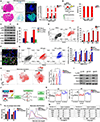

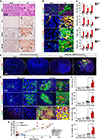
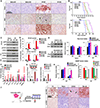
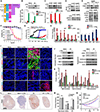

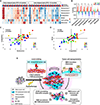
Comment in
-
F3 Regulates Radiation Therapy-Induced Remodeling and Resistance in Glioblastoma.Cancer Discov. 2023 Sep 6;13(9):1958. doi: 10.1158/2159-8290.CD-RW2023-115. Cancer Discov. 2023. PMID: 37477398
-
Tissue factor at the crossroads of coagulation and radiation response in glioblastoma.J Thromb Haemost. 2024 Jan;22(1):3-6. doi: 10.1016/j.jtha.2023.10.018. Epub 2023 Oct 30. J Thromb Haemost. 2024. PMID: 38173243 No abstract available.
References
Publication types
MeSH terms
Substances
Grants and funding
LinkOut - more resources
Full Text Sources
Medical
Molecular Biology Databases
Miscellaneous

